Table of Contents
Home » Travel Guides » Nepal » How To Have a Respectful & Safe Time In Nepal!
Nepal is a country rich in culture & tradition and one of my favourite places in the world. Before embarking on your own journey to the birthplace of Lord Buddha & the homeland of the mighty Mount Everest. I have put together a quick guide to ensure you have a respectful and safe time in Nepal.
If you’re like me and love travelling to countries that are going to give you a unique cultural experience. Nepal is definitely the destination for you. And, is a big part of why I’ve been to Nepal 8 times. Throughout the country, you’ll come across many different ethnic groups who are all generally conservative and traditional people. So I’m here to share with you some honest advice and tips to help you have a respectful and safe time in Nepal.
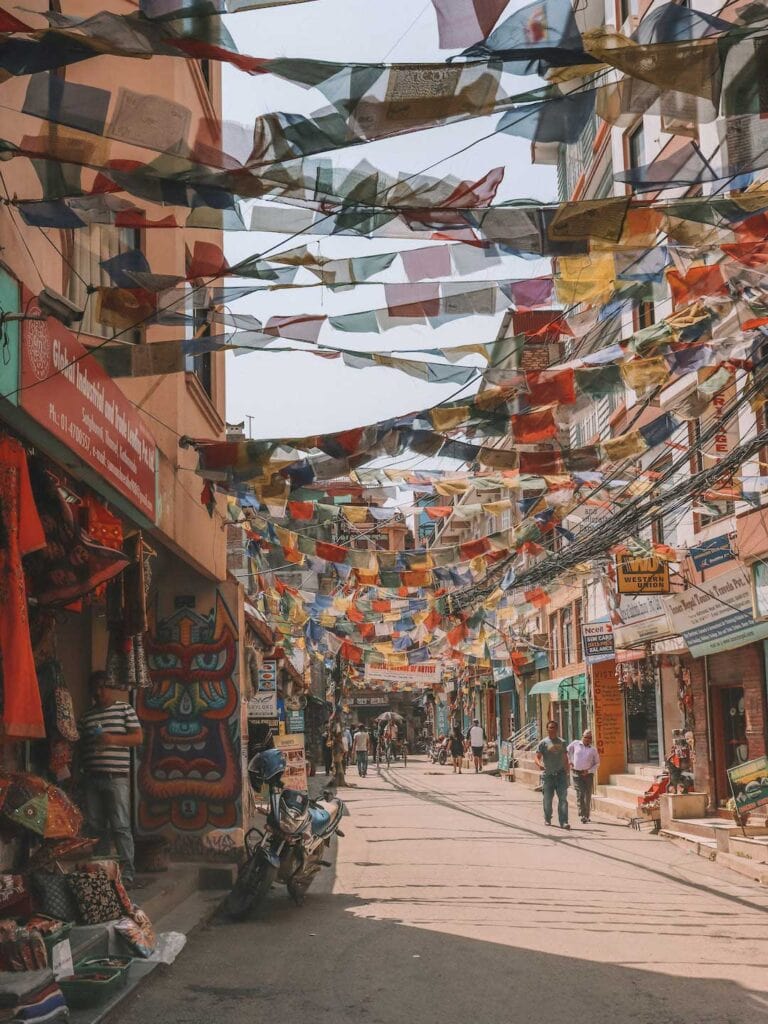
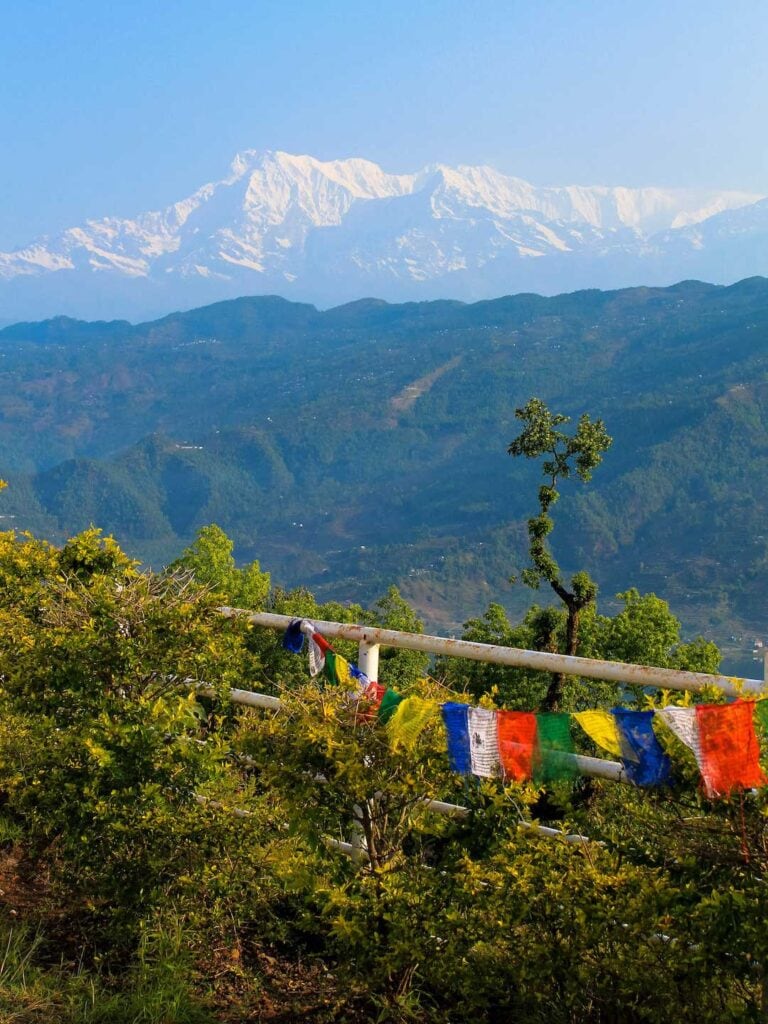
Greetings in Nepal
Always greet locals by placing your palms together in the prayer position, fingers facing upwards. And, with a slight bow of your head say namaste or more formally namaskar.
Basic Nepali Phrases
Nepali is the official language in Nepal, spoken by the majority of the population and commonly used for communication in urban areas and tourism. This isn’t an easy language to master and no one expects tourists to become fluent. English is widely understood in tourist hubs, but embracing a few basic Nepali phrases will enhance your travel experience and foster a deeper connection with the warm and welcoming Nepali people.
Thank you – Dhan-ya-bahd (although this isn’t commonly used, especially with younger people. So you can always just say “thank you”)
Older Brother/Male – dai
Younger Brother/Male – bhai
Older Sister/Female – di-di
Younger Sister/Female – bahini
For tourists, the brother/sister words are commonly used in restaurants or shops when speaking with staff.
How much is this? – Yō kati hō?
I’m Vegetarian – ma sah kah hab ri hu
See you again – Phēri bhēṭaulā
Eating and Drinking Customs in Nepal
If you choose to eat as the Nepalese do, with your hands, only use your right hand. Your left hand is reserved for washing up in the bathroom.
Once something has touched your lips, consider it polluted and never offer anyone else a bite. Also, it’s common for people to share drink bottles but their lips will never touch the rim. Nepalese will always hold the bottle up and pour the drink into their mouth without making contact with the top of the bottle.
The tap water in Nepal isn’t safe to drink, even using a small amount when brushing your teeth could result in diarrhea. And any more than that you could end up with a serious stomach bug.
And unfinished plates of food in Nepal are a sign to your host that you found the meal unsatisfying. If you ever feel the portion you’ve been served is too large, politely ask your host to remove some before it has been touched.
What to Wear in Nepal
Dressing modestly while traveling in Nepal will ensure Nepali people (particularly the older generation) feel more at ease and comfortable around you.
I don’t think it’s ever appropriate to wear revealing clothing. It’s advisable to dress comfortably and modestly, especially in religious and rural areas.
I always have my shoulders & and cleavage covered and wear something that is at least keen length. Additionally, I like to carry a scarf or shawl, which can be both a practical accessory for staying warm and a sign of respect when entering religious sites or homes.
Over the years I’ve seen travelers wearing more revealing clothing and that’s up to them. But I choose to be as respectful as I can and ensure I have a safe time in Nepal.
Also, if you’re planning on swimming while travelling in Nepal, it’s advisable to stick with the one-piece bathing suit or wear a T-shirt over the top.
And, lastly, visiting someone’s home in Nepal is always a wonderful experience, but remember to take your shoes off before you enter their home.
What to Wear for Trekking
When trekking in Nepal, it’s essential to dress in layers to adapt to the changing altitudes and weather conditions. Start with moisture-wicking base layers to keep sweat away from your skin, add insulating layers like fleece or down for warmth, and top it off with a waterproof and windproof outer shell.
Don’t forget sturdy, comfortable hiking boots, a hat for sun protection, sunglasses, and a good quality backpack to carry all your essentials like water, snacks, and camera gear. Additionally, always pack a beanie and gloves, as temperatures can drop significantly at higher elevations, especially when starting your treks early in the morning.
The biggest advice I can offer you to prepare for a trek in Nepal is to buy a lot of this gear once you’re in Nepal.
Thamel is filled with stores fully equipped with all the trekking gear you’ll ever need, at a fraction of the cost. Over the years I have brought a lot of gear from local Nepali stores and everything has been excellent and lasting quality.
Plus, you’ll be helping the local economy.
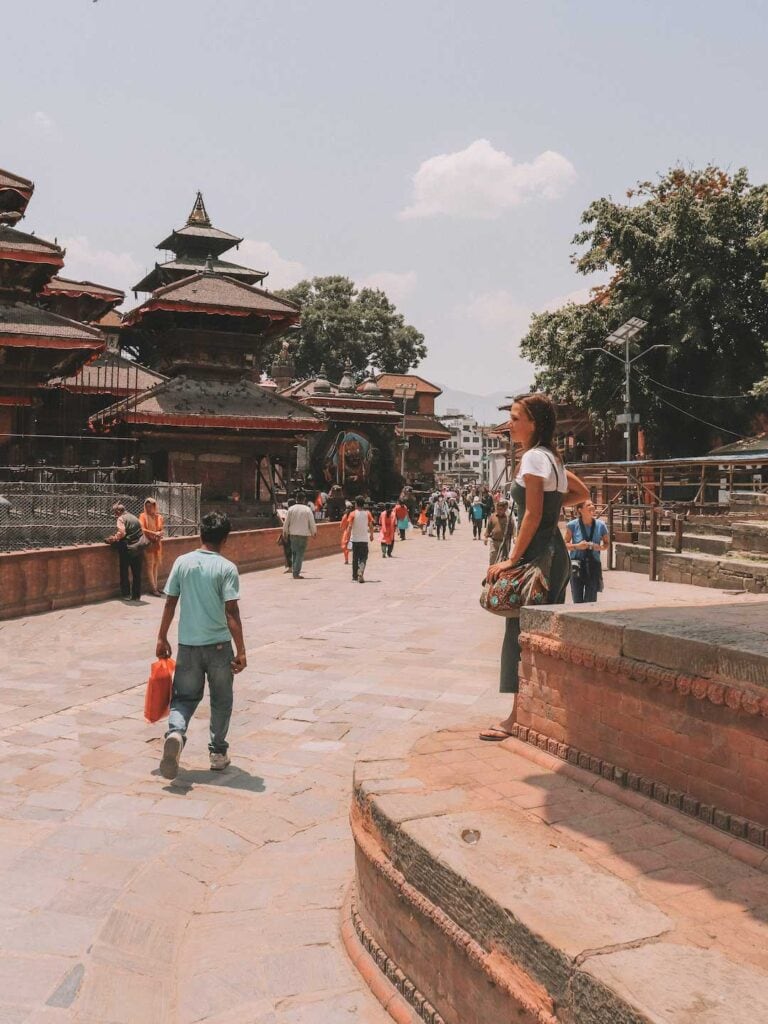
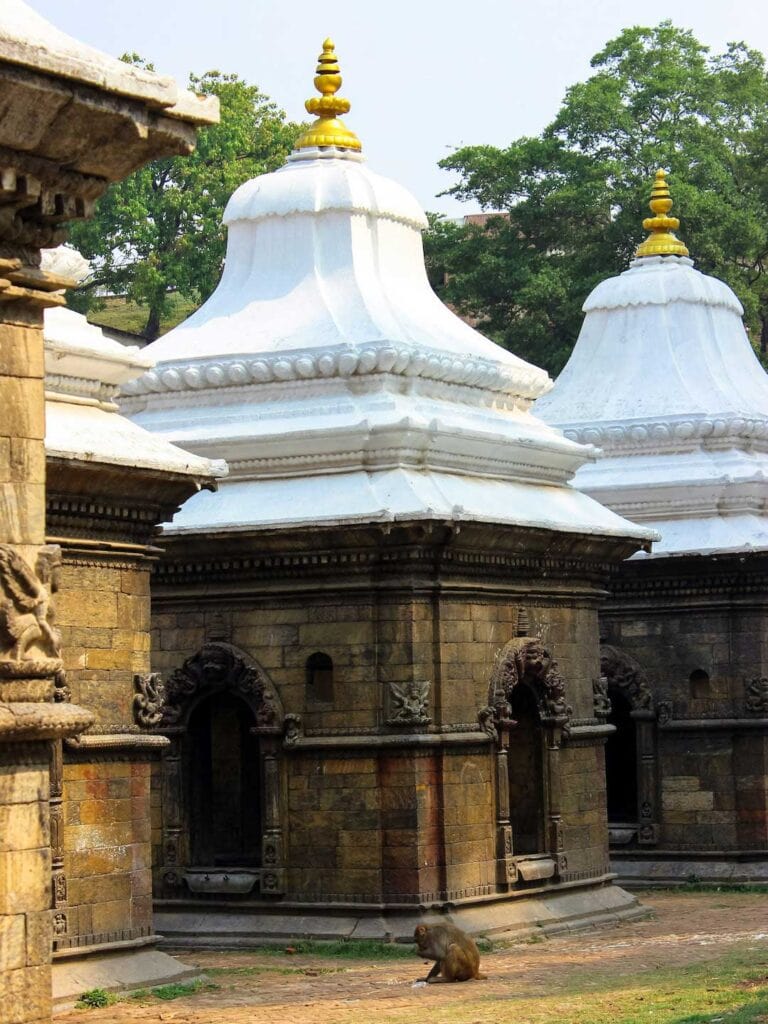
Public Displays of Affection in Nepal
In Nepal, it’s important to be mindful of local customs and cultural norms regarding public displays of affection (PDA). While holding hands is generally acceptable, more intimate displays of affection, like kissing and hugging, are often considered inappropriate and may make locals uncomfortable. To show respect for the local culture and traditions while travelling in Nepal, it’s advisable to keep romantic gestures private and refrain from excessive PDA.
Begging in Nepal
Throughout Kathmandu, you will see many men, women, & and children begging on the streets. Especially during major festival periods. Begging is a tough one and a topic that has many layers to it!
It can be near impossible for a foreigner to determine whether the people they’re seeing on the streets are legitimate or involved in some kind of scam.
Some of the worst stories I’ve heard usually involve children being forced by someone else to beg on the hot dusty streets, and then handing that money over to someone behind the scenes. To later, only receive a small amount in return.
This happens more regularly during major festivals in Nepal, such as Dashain. These so-called “organizations” will place people all over cities in Nepal to beg. It’s unfortunately become a big business and no doubt this puts many less fortunate people in extremely unsafe situations.
There are limited unemployment benefits in Nepal so I’m sure many people legitimately need our help. Personally, I would prefer to give food, clothing, and blankets to people on the streets, instead of cash.
Another option to give back in Nepal is by donating to non-government organizations. These organizations are doing amazing work all over Nepal and really are making a difference in people’s lives.
If money is something you would like to provide needy locals with, why not donate to an NGO? So at least you know it’s being spent the right way.
An NGO I have been donating to since 2011 is In Giving We Receive (IGWR). I personally know everyone involved in this organization and have seen firsthand how these donations are being spent.
Click here to visit IGWR’s website.
Is Nepal Safe to Travel?
Nepal is generally a very safe destination for travellers, with tens of thousands visiting each year without encountering major issues. However, like any other place, it’s crucial to exercise common-sense precautions to ensure a safe time in Nepal. Be mindful of local customs, respect cultural sensitivities, and take necessary precautions, such as securing your belongings and being cautious in remote areas.
I have been visiting Nepal since 2009 and although I’m generally not a solo traveller, I often spend time alone and have never felt at risk.
Nepal’s warm hospitality, kind locals, and stunning landscapes make it a rewarding destination. When departing Nepal I always feel at ease and leave feeling like a much happier person.
Travel Insurance
When embarking on your adventure to Nepal, it’s essential to prioritize your peace of mind by investing in travel insurance. Whether you’re trekking in the Himalayas, exploring ancient temples, or immersing yourself in the vibrant culture, having comprehensive travel insurance ensures a safe time in Nepal. Plus, even though Nepal isn’t an expensive destination, travel Insurance offers financial protection and medical assistance should unforeseen circumstances arise during your trip.
For possible hospital visits, lost or damaged camera gear, or even worse, being airlifted from a remote region due to altitude sickness! Cover More will have you looked after; click here for a quick quote.
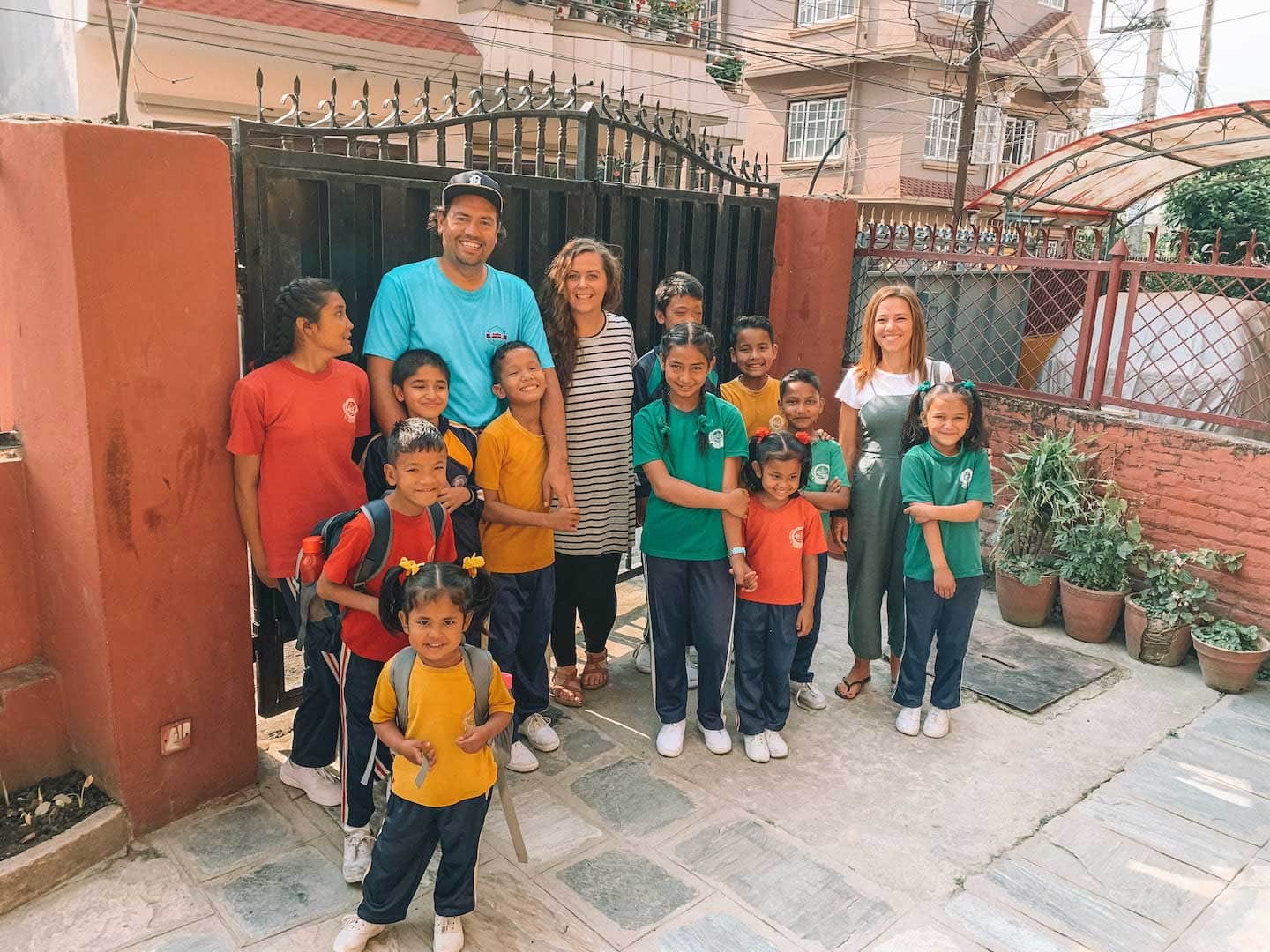
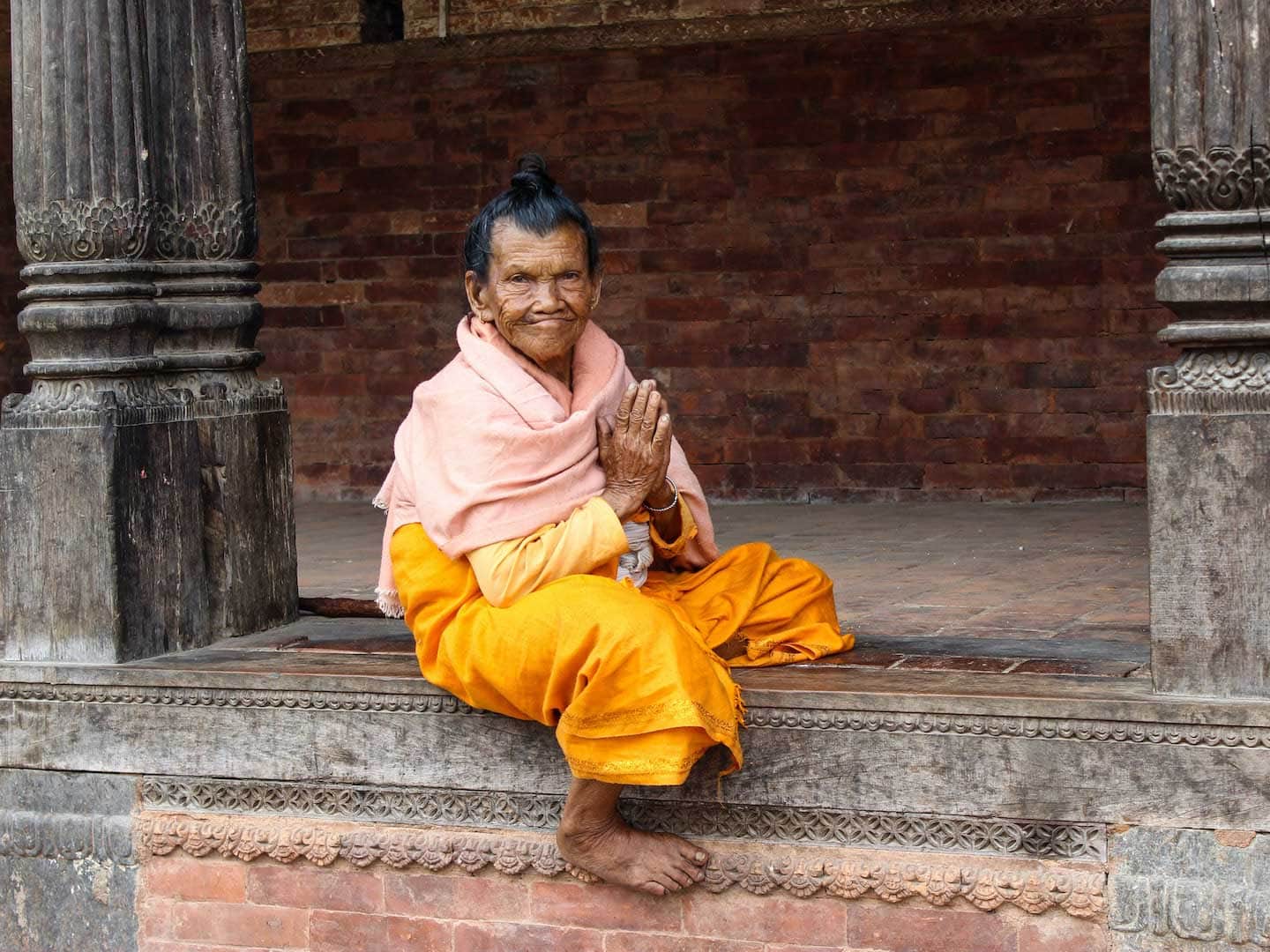

In Conclusion
When you venture to Nepal, embracing its rich culture and natural beauty while being a respectful and responsible traveller is key to ensuring a safe time in Nepal. By following the tips and guidelines in this guide, you can create meaningful connections, leave a positive impact, and cherish the memories of your trip. All while contributing to the preservation of Nepal’s beauty and heritage. Remember, safety and respect go hand in hand, creating a harmonious experience that benefits both you and the incredible nation of Nepal.
I hope you love Nepal as much as I do. If you would like to learn more about this fascinating country, click here for 27 Interesting Facts About Nepal.
Do you know what NEPAL stands for?
– Never Ending Peace And Love –
Thanks for reading,
Happy Travels.
If you found this information helpful, please consider booking your trip via my affiliate links. This won’t be at any extra cost to you and will help fund this blog, thank you.
Like this article?
Pin It!
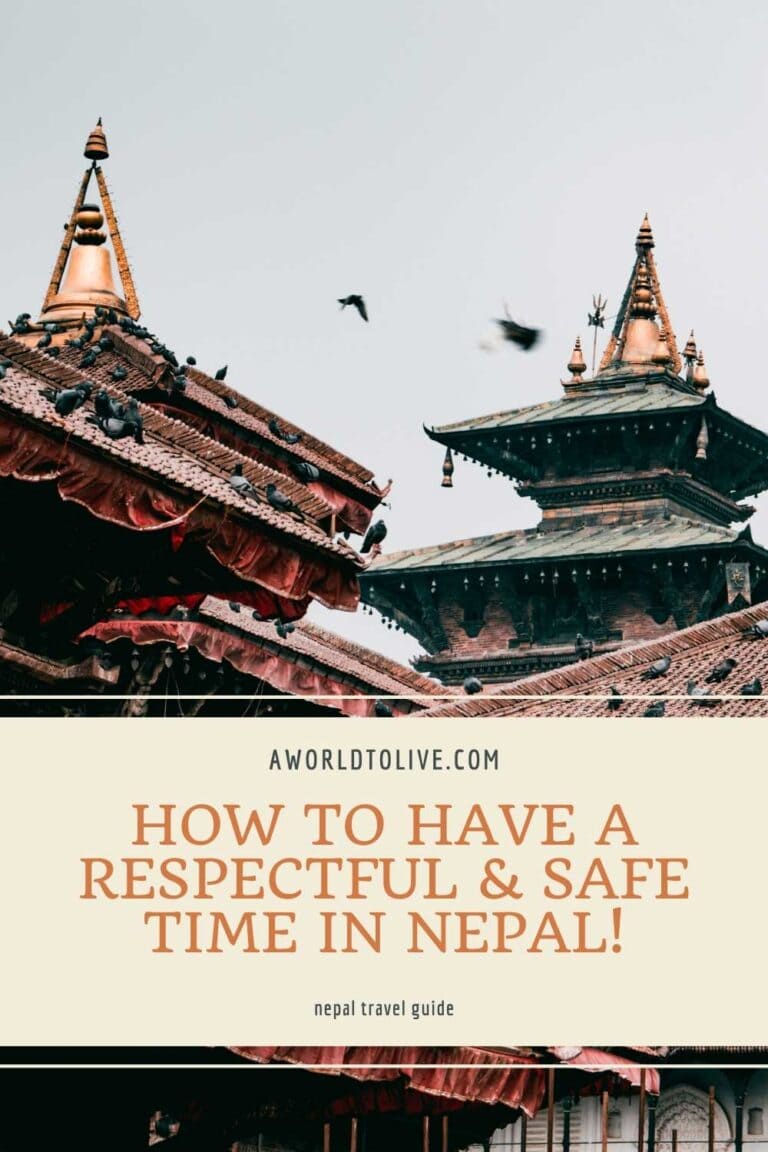
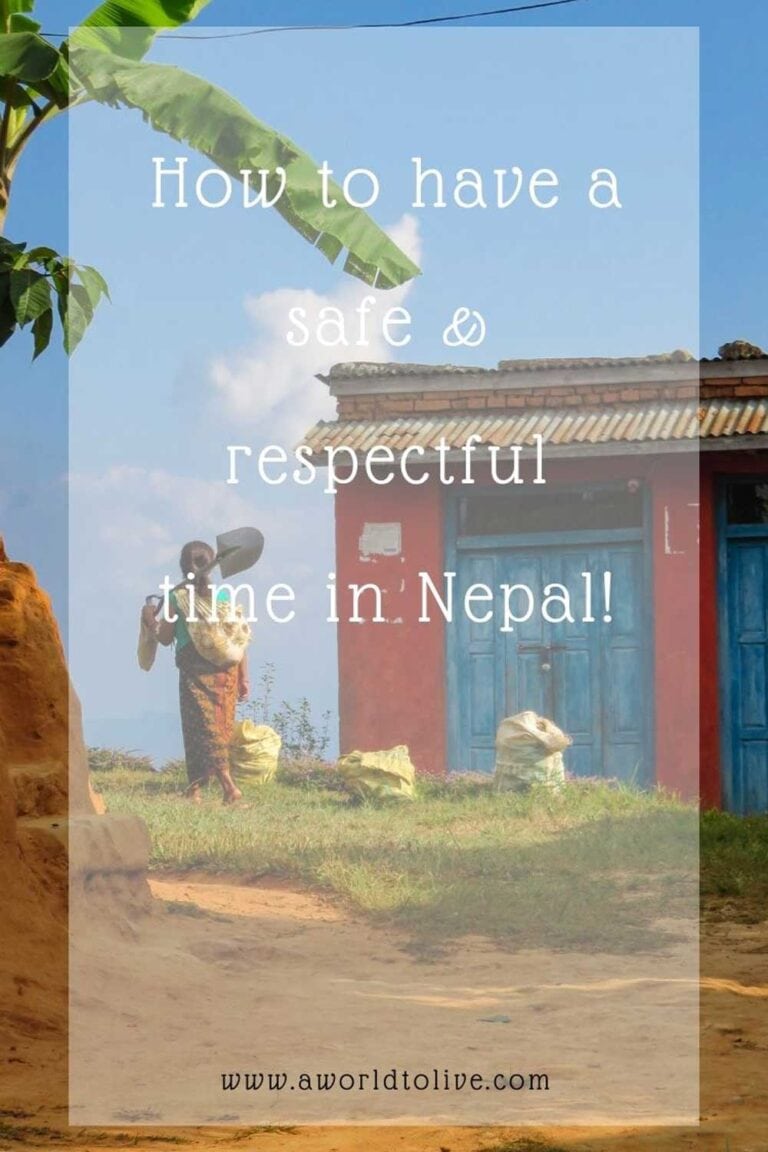
If you liked this article, I would love for you to share it with your friends.
Planning a Trip? Travel Resources Below;
Searching For The Best Flights
Without a doubt the best site for comparing and booking flights is Skyscanner. Just click here to compare flights and get the best prices with Skyscanner.
Booking Accommodation
Click here to save on accommodation, from hostels to luxury hotels!
Get Cashback on Bookings
Before you book don’t forget to activate your Rakuten browser extension so you get cashback on your travel bookings.
Don’t know what Rakuten is? Read my guide here!
Never Skip Travel Insurance
Unfortunately, everything doesn’t always go to plan but travel insurance will protect you when it comes to illness, injury, theft & cancellation. I never travel overseas without travel insurance, it’s just not worth the risk!
Cover-More is a trusted company, who have a good reputation for making customer claims a hassle-free process.
Where to Next?
If you’re unsure of where to visit next, why not check out my Destination Page filled with exciting ideas from all over the world?

Elyse is the author & content creator behind A World To Live. After traveling to over 40 countries, she has a passion for discovering new places. Elyse is a money-conscious traveller who loves writing independent travel guides to help her readers get the most out of their travels.
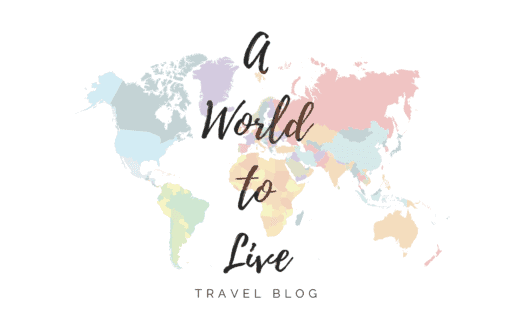
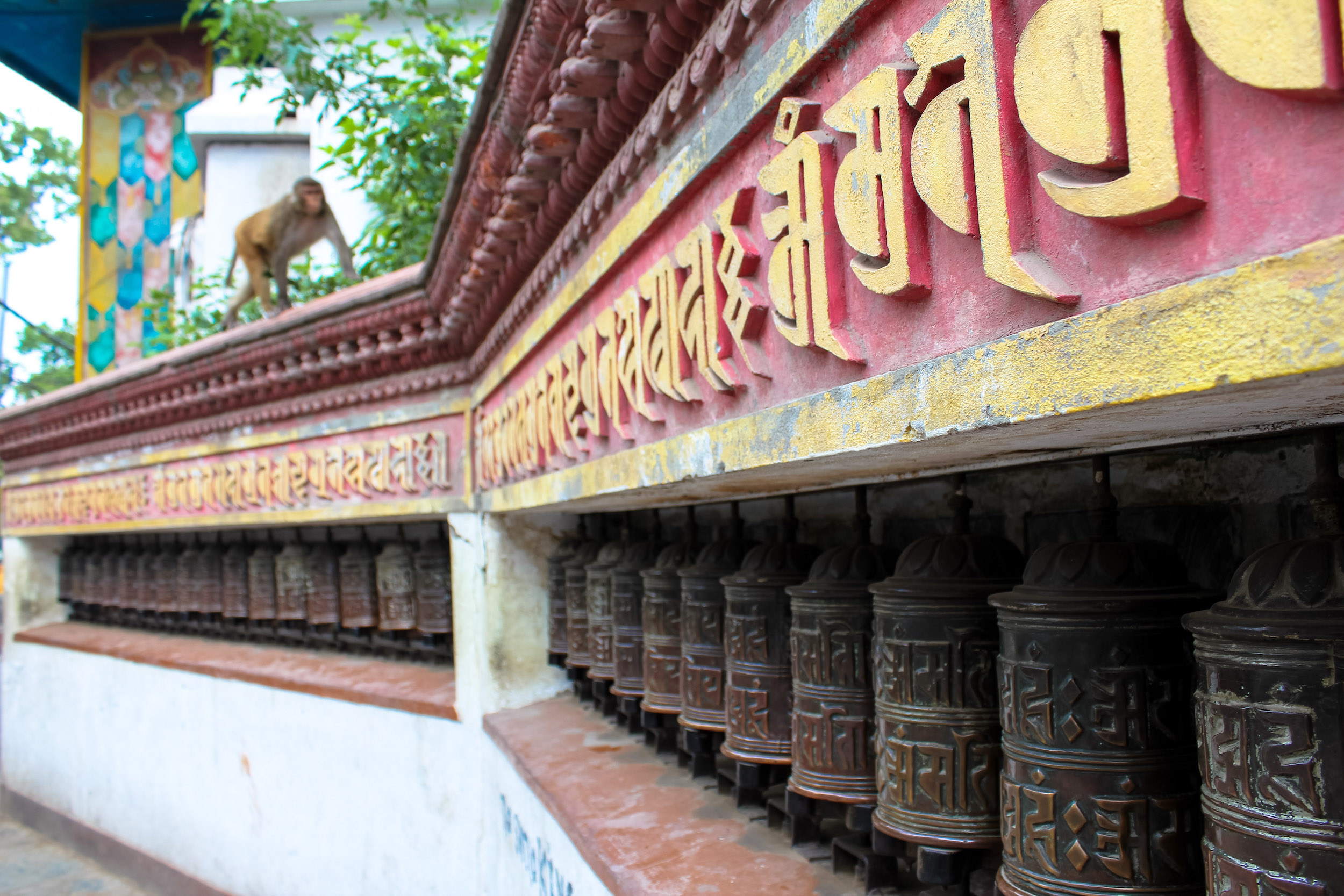

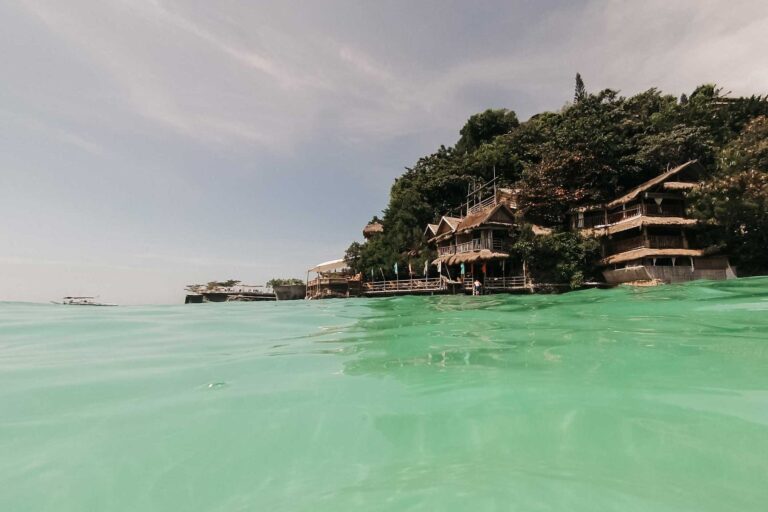
![Read more about the article Kathmandu Travel Guide [Updated] A Comprehensive Travel Guide to Thamel and Beyond](https://aworldtolive.com/wp-content/uploads/2017/08/local-stall-Kathmandu-fi-768x512.jpg)
Another great read… Thanks
This is such a great article, good things to know if visiting Nepal. I have seen many times people go to different countries completely unaware of the culture and can be very disrespectful.
Thank you so much. yeah that’s what i was worried about so thought this was important to share
I always look out for posts like this before I travel somewhere new so I can really get acquainted with the local customs, do’s and dont’s! I will be visiting Nepal one day so I shall be referring back to this! Thanks for compiling such a useful post 🙂
Yeah I do the same, thank you so much Tam, glad you found it helpful
I love this article and how it approaches treating the residence of this country. Great advice that covers a good range of social interactions. I try to follow advice like this whenever I visit an area where I am not familiar with the customs.
Great to hear, thanks so much Rhonda
As someone who has always dreamt of visiting Nepal, your article is really helpful and I’ll make sure to follow your advices (quite common after all!) when I go! Thank you for sharing 🙂
Thanks very much Marina
I have never been to Nepal before, so it’s great to know how to have a safe time while visiting it. It’s not a part of the world I’m too familiar with in all honesty.
Thanks heaps Krista, hope you found it helpful
oh did you hear about the superstition where you’re only supposed to walk on the right of flag poles? apparently it’s bad luck if you walk on its left. i literally made this mistake on the first day of my trek – and i lost my phone on my last day there.. talk about a poetic tragedy 😅
Oh really, I hadn’t heard about the flag pole. But this reminds me that when you’re visiting a stupa you must walk around it clockwise. That’s terrible about your phone 🙁
Very helpful tips! I always worry about what to wear abroad.
Wow this is all such fascinating information. The food customs were really eye opening for me! The removing of portions would be so tricky because I never know how much I’ll want to eat .
I have never been to Nepal, but hope to go there in 2024. This is a great post to start researching culture, accommodations and food. Thank you!
I’ve never been to Nepal and I love reading posts like this to better prepare myself and respect the country I’m visiting. Thanks for sharing all your helpful tips. I’ll be saving this post for a future trip!